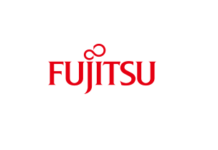
ACCESS CO., LTD and Verimatrix today published the exclusive whitepaper “Multiscreen in 2017: Delivering best-in-class experiences across all screens”. Building on ACCESS’ and Verimatrix’s long-standing relationship, the white paper provides clear advice and steps for operators trying to navigate the intricate multi screen route today.
“The multiscreen market has been revolutionized over the last year,” stated Dr. Neale Foster, Managing Director and COO at ACCESS Europe. “Emerging markets are showing that it is possible to combine operator content with UGCs, social sharing and YouTube. Yet the Western world has remained traditional with a linear approach, despite the rise of virtualization and access to content everywhere. The multi-source vision of multiscreen is now a reality in developing markets and as companies such as ourselves launch technologies that enable the utmost level of content protection for all content sources on all screens, we will see this revolution go global.”
Building on the latest evolution of the multiscreen market, such as increased content sources and device fragmentation, the rise of virtualization and the near future access to entertainment in the connected car, the three-step guide provides guidance for operators looking to:
- Serve a plethora of devices
- Syndicate content sources effectively
- Secure the delivery of all assets
The “Multiscreen in 2017: Delivering best-in-class experiences across all screens” white paper can be downloaded from the ACCESS website, and will be readily available at IBC 2017 on the ACCESS stand (#14.D14).
On Sunday, September 17 at 15:30 – 16:15, Dr. Fleming Lampi, Global Product Director at ACCESS will also be taking part in a panel discussion entitled “Service design considerations for the multi-screen OTT world” in the Content Everywhere Hub (Hall #14.J10), where he will be able to provide further insight into the state of the multiscreen market and why content protection should be part of the design of any multiscreen service.


















